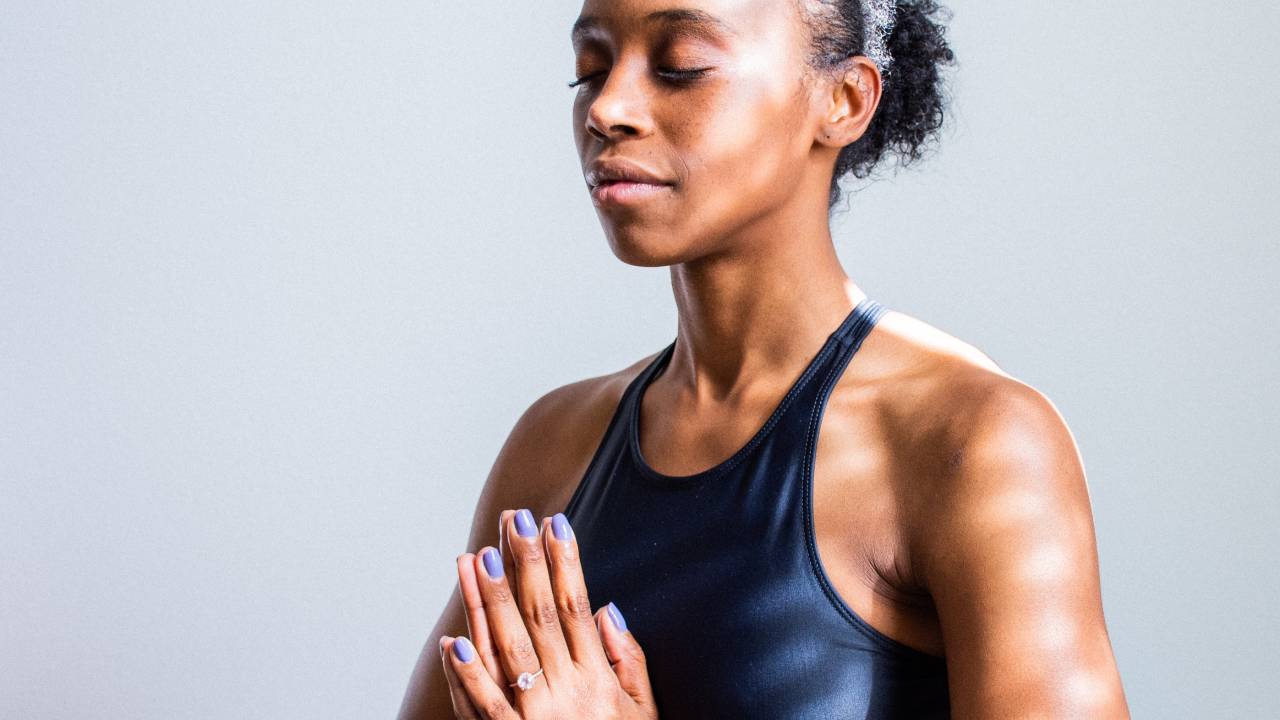
Sometimes work can leave us feeling drained both physically and emotionally. It doesn’t even take a particularly manic day to make us feel like this but just devoting our energy for hours a day can take it out of us and lead to feelings of stress. This can be especially true if we’re juggling personal concerns or balancing a busy home schedule alongside work.
Yoga is a great way to corner off a section of the day to yourself. Traditionally, it’s practiced at the start of the day but it also fits in nicely when transitioning from work to home life. Moving your body in a mindful way and combining this with relaxed breathing can help to calm the nervous system, slow your thoughts down and provide a reset for the body.
If you can carve out 15 minutes as soon as you get in from work before preparing dinner, this yoga sequence can help you enter your evening with a more positive and relaxed mindset. So, grab the best yoga mat and let's begin.
1. Relaxation
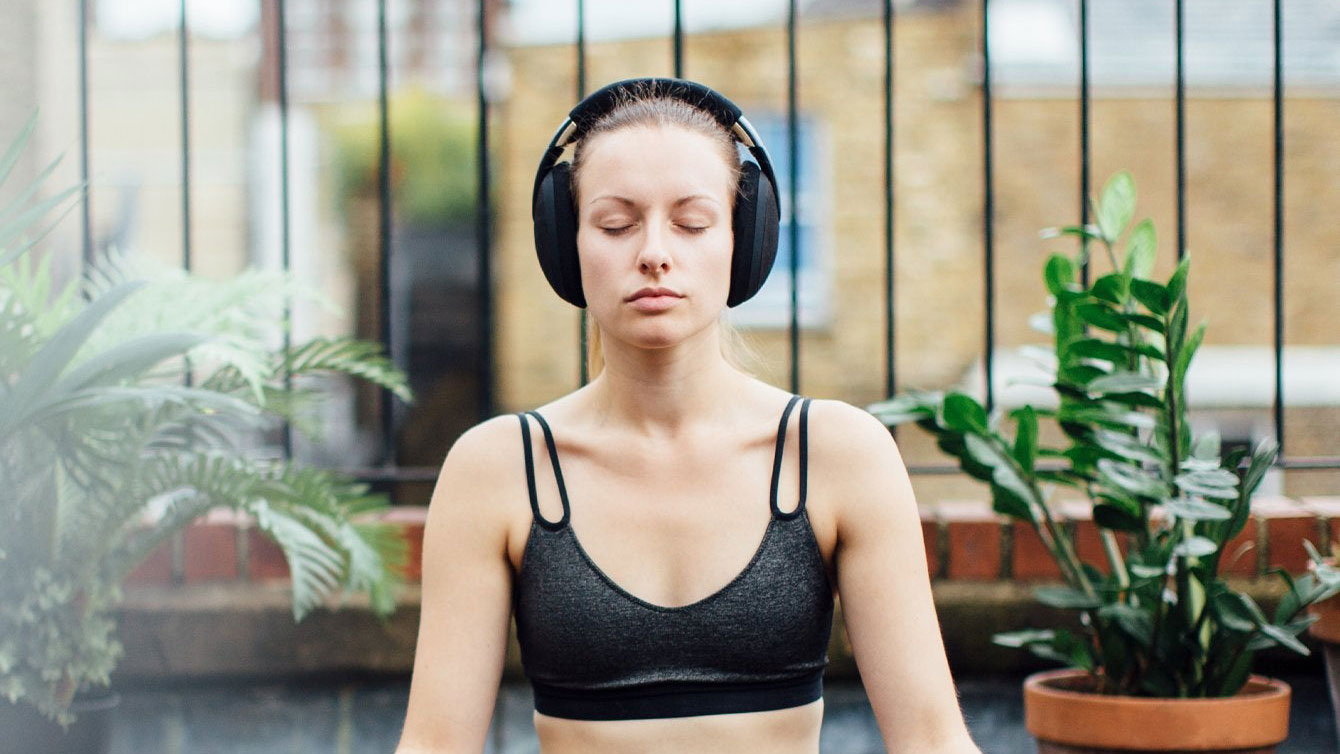
When transitioning from work to home, it’s important to spend some time adjusting the body and mind to your yoga practice. Before practicing any of the postures, lie down on your back. You can use a rolled up blanket under the knees to help support your lower back, if needed. Place your hands onto your abdomen and practice deep, belly breathing. As you inhale, you want to feel your belly move out so your hands lift up slightly. On an exhale, your abdomen draws softly towards the spine. You can count to four on the inhale and exhale, making the breath equal. Start to let go of your day and come to the present moment.
2. Extended child’s pose
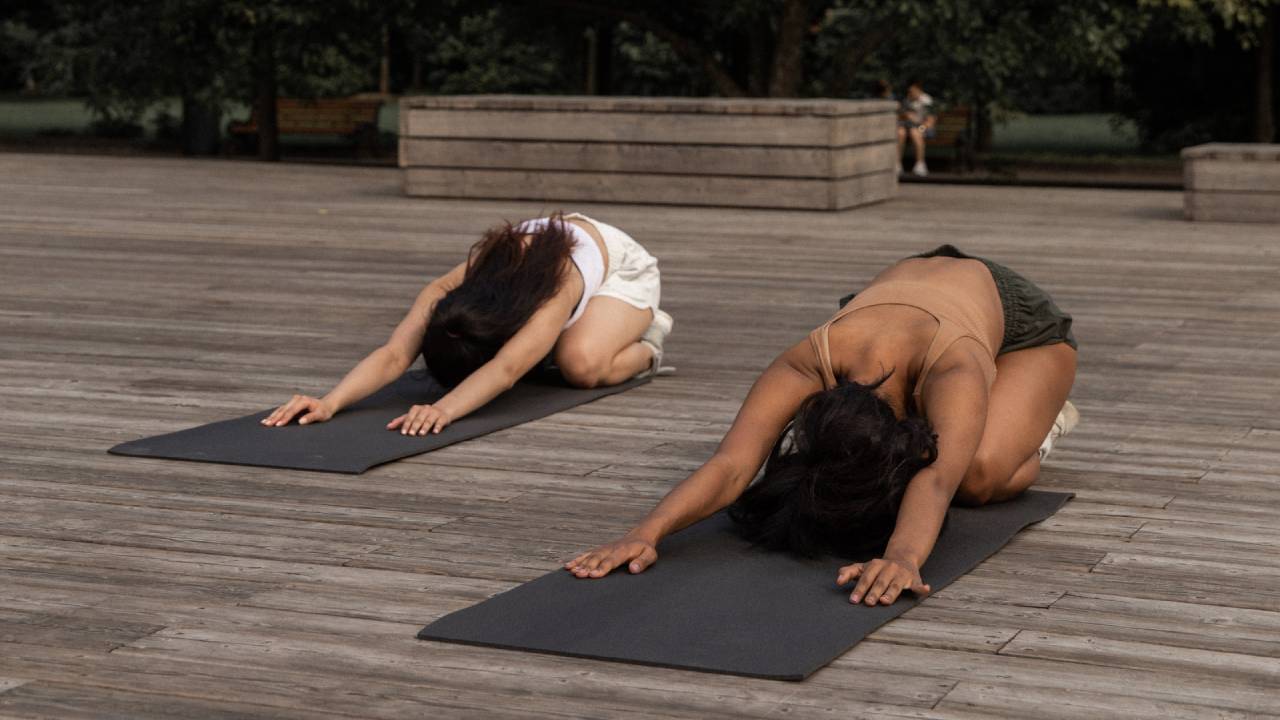
Extended child's pose is a great posture for when you’ve been sedentary for the best part of the day. It’s also a great way to let go of tension that may have built around the neck and shoulders from a busy day.
Sitting back on your heels with your knees apart. Inhale, lift your arms up and exhale fold forward. Stretch your arms forward towards the top of your mat, keeping your buttocks back towards, or on, the heels. Feel your armpits opening towards the floor, gaining more and more length through the front, sides and back of the body. Allow your chest to descend towards the floor, and you can place your forehead to the floor or look between your hands. Choose the variation that gives you the most opening across the chest and shoulders but that also feels comfortable for your neck. Hold for one minute, breathing deeply, softly and slowly.
3. Seated twist
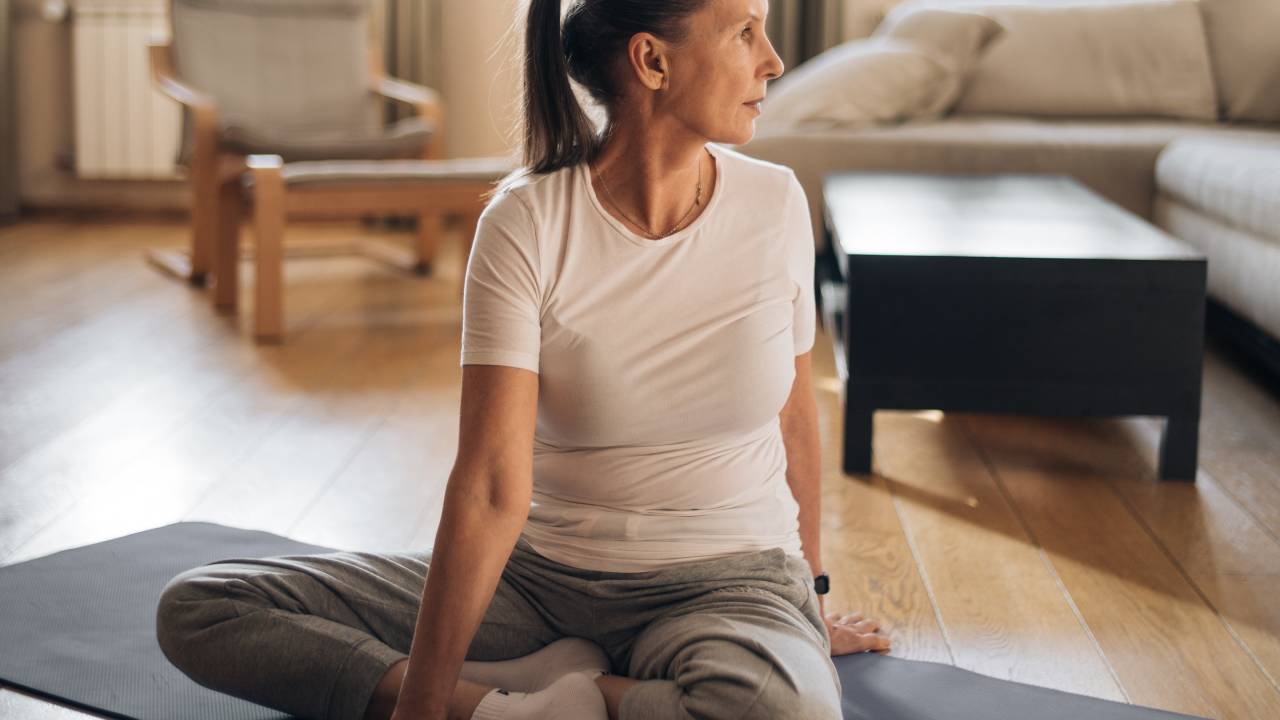
Moving from your extended child’s pose, walk your hands in towards your knees and come to sit up straight on the heels. If this is uncomfortable, change to a cross legged position or even come to sit in a chair. If sitting on your heels, feel free to take a yoga block behind you. Inhale a deep breath and exhale, place your right hand behind you on to the floor or the yoga block. Bring your left hand to your right knee. Take another inhale and on an exhale, twist a bit deeper. Hold for a few breaths before releasing and taking the twist to the other side. Remember to move slowly and consciously to produce mindful movement. Feel what’s going on in your body as you move into and out of the twist.
Twists aid the digestive system which can be affected when we’re experiencing stress so bringing them in at the end of the day can help us to digest our dinner better, sleep well and wake up feeling less sluggish.
4. Downward facing dog
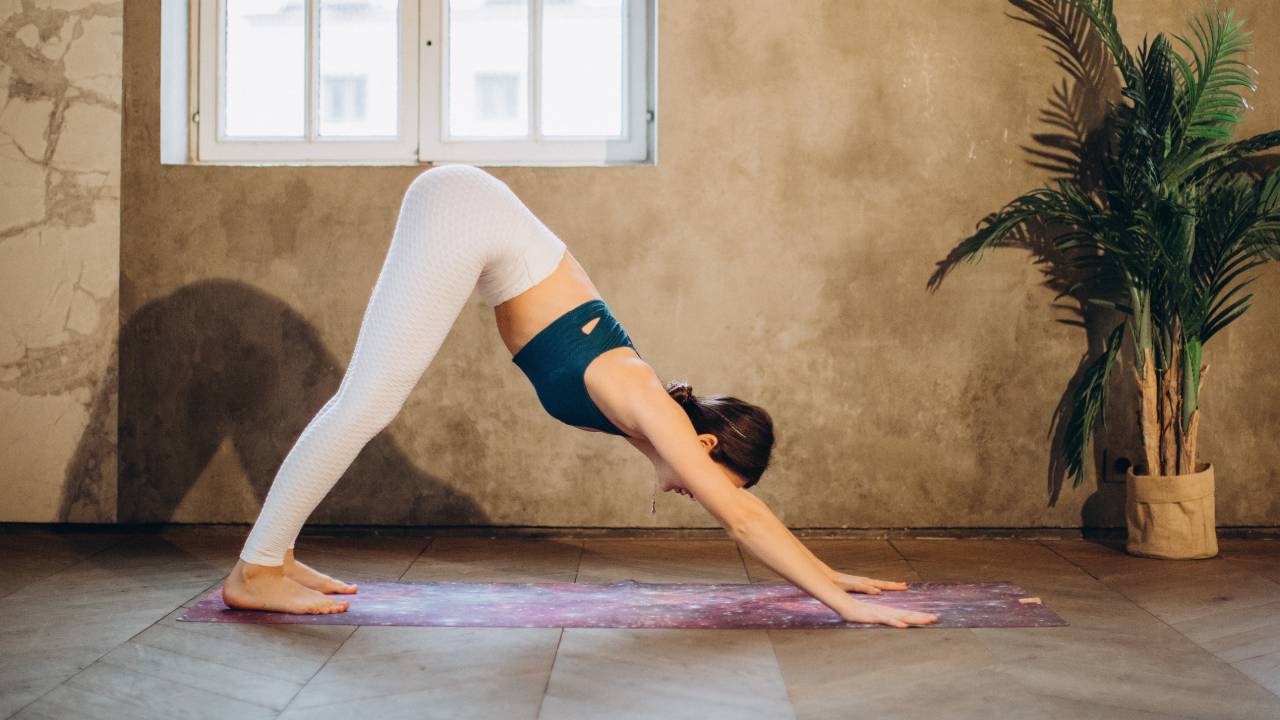
Downward dog is a must in most yoga sequences, giving the whole body a nourishing stretch. Come to all fours and tuck your toes. Spread your fingers wide. On an exhale, begin to lift your knees off the floor and press your hips back to come into an inverted ‘V’ shape. If you find your upper back is rounding or you’re straining the backs of your legs, keep a soft bend in the knees. Hold for a few breaths, paying particular attention to creating a soft and controlled breath, before releasing and bringing the knees slowly back to the floor.
5. Lunge
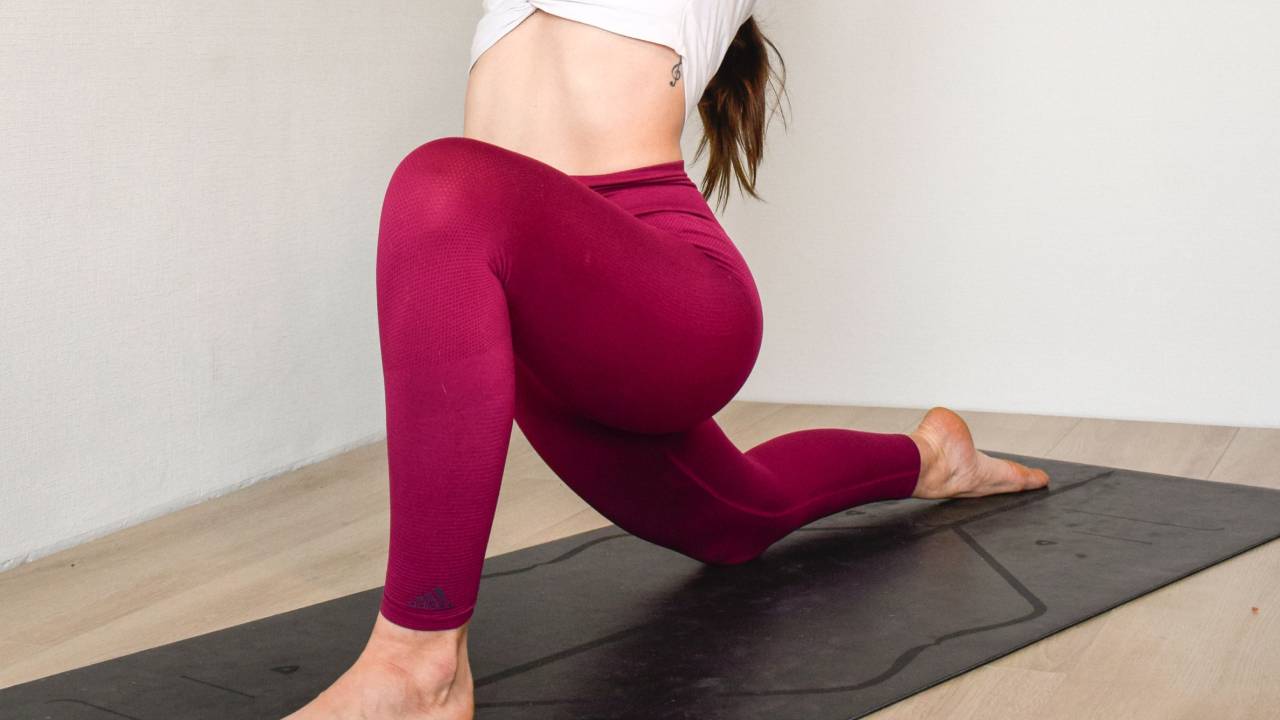
Step your right foot forward between the hands. You can place yoga blocks either side of your right foot to place your hands on to, especially if placing the hands on the floor causes a rounded back. Taking deep breaths, allow your hips to sink, helping to open the hip flexor and stretch tight thigh muscles. Our hips can hold tension so it’s a wonderful idea to hold these lunges for a while to feel the tension release. Hold for one minute before carefully shifting the weight back into the hips and changing legs.
6. Warrior II
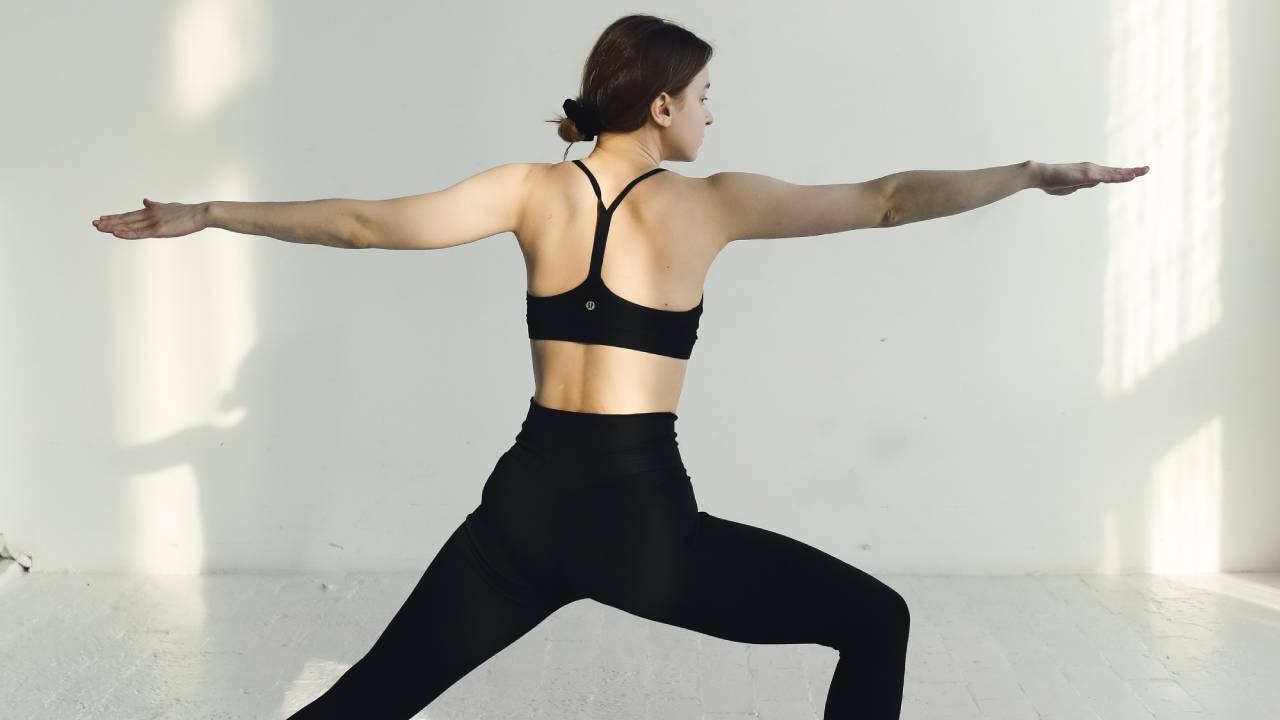
We’ll get a little bit more active now with Warrior II. To add some heat to the practice, come to stand. Creating heat in your practice can help let go of any frustrations or anger you’ve felt during the day and to close your practice in a more positive mindset. From standing, step your feet wide facing the long side of your mat. Turn your right toes out to face the short side of the mat and turn your left foot in on a slight angle. Press into the outer edge of your left foot firmly, lifting the arches of both feet. This will give you a strong standing base to open your hips deeply.
Inhale, lift your arms up to shoulder height with your palms facing the floor. Reach out through your fingertips. Exhale, start to bend your right knee but rather than leaning into the right knee, just allow your hips to drop down in the center. This will produce a juicy hip stretch, create heat in the body and help lift energy so you can have a productive, rather than sluggish, evening. If you experience any surges of heat, breathe into them and exhale slowly through to the mouth. This will help you release frustration either from events in your day or towards the posture itself. It’s not an easy one to hold! Hold for three slow and deep breaths before pressing into the feet on an inhale and exhale straightening the right knee and releasing. Practice this again but bending into the left knee now.
7. Seated breathwork
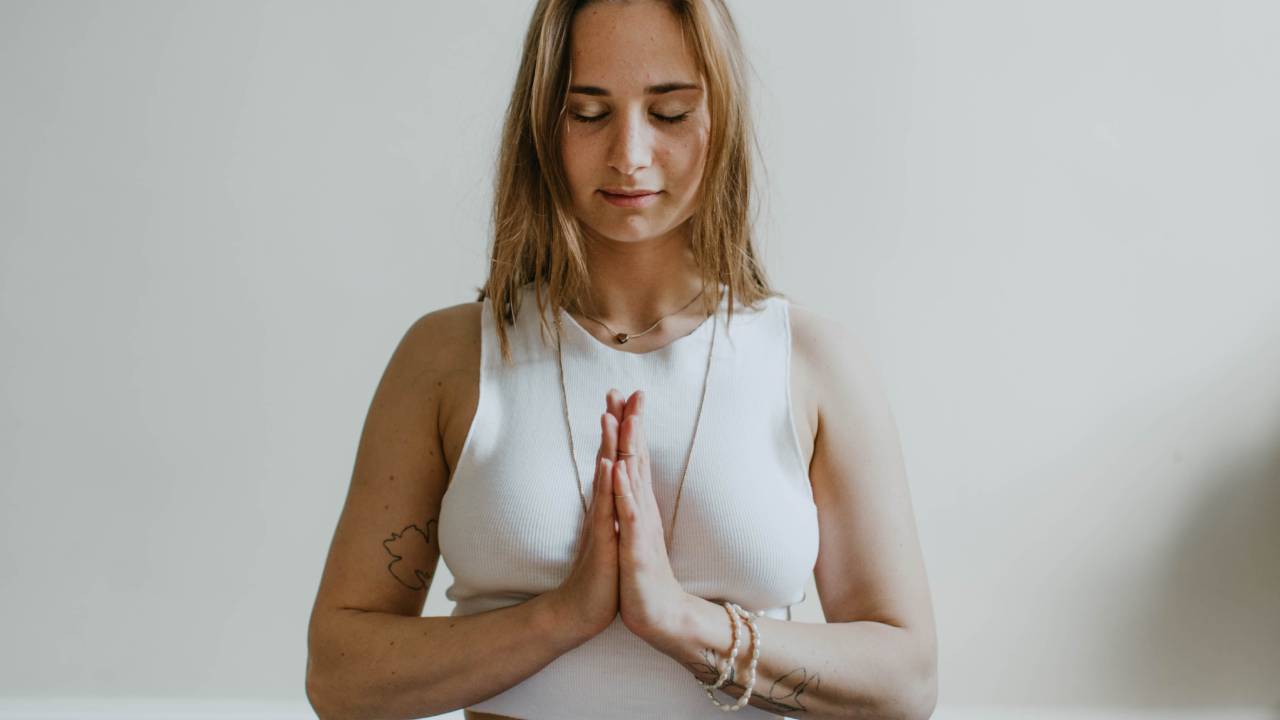
Part of working on de-stressing the body and mind is the use of the breath. By slowing the breath down, you're telling the nervous system you're relaxed and safe and there’s no reason to feel anxious or on edge.
Find a position that’s comfortable for you where you won’t be distracted by complaints of the physical body. Once you’ve found your position, take three slow and deep breaths into the belly. Feel the movement of the abdomen, moving out on the inhale and back to the spine on the exhale. From here, visualize the air flow entering only through the right nostril to the point between the eyebrows and on the exhale, leaving the body through the left nostril. Now on the inhale, visualize the air flowing only in through the left to the point between the eyebrows and on an exhale, leaving only through the right nostril. You’re breathing with both nostrils but shifting your attention to one nostril at a time.
Continue by breathing in, focusing on the right nostril to the point between the eyebrows and exhale, through the left. Continue for as long as you’re comfortable doing so. If you have more time, dedicate more time to this soothing breathwork. The concentration required and slow breathing helps to create a calming effect on your thoughts and nervous system, allowing you to start your evening in a more relaxed state.







